Chipps is over in Austria for the 2010 Trek presentation. This year (well 2009 model year) saw a lot of new bikes like the all-spanky Top Fuel with its distinctive carbon seatmast. 2010 sees some gentle tweaks to existing models and some upgrades to frames and componentry.


The full-carbon Top Fuel frame is unchanged, though there are a couple of upgrades. The Top Fuel is reviewed in the current issue 50 of Singletrack. We thought it was a great but it lacked a little bit of the ‘bite’ and ‘snap’ of a true race bike – it just felt a little too nice. It seems that Trek felt that too and this year they’ve worked with Fox to create a new variation of the RP23 rear shock (called ‘Race Cam’). The three position Pro Pedal lever works as normal in positions ‘1’ and ‘2’, which are the positions in which the bike feels like a normal trail bike. Turn up on race day though and stick it in position ‘3’ and that’s where the new valving steps in. With Pro Pedal on, the feel is super-firm, nearly locked out, for sprints, gravel climbs and so on. With Pro Pedal off in position ‘3’ there is still a level of pedal platform, roughly equivalent to Pro Pedal position ‘1’.
The frame still features things like Trek’s ABP dropout, where the rear pivot is also the rear axle, isolating brakes forces. There’s a BB-90 system that features drop-in bearings, narrowing the Q-factor, especially when used with the FSA cranks. The ABP on the Top Fuel is lighter and one sided compared to the original system launched on the Fuel EX, meaning that the captive nut stays in the frame and you can put wheels in and out one-sided.

Still with us? Although the RP23, looks the same, it isn’t: when playing, riding and training, you can have Pro Pedal working like on a normal trail bike, but on race day in position ‘3’, it allows for a much more aggressive (some would say uncomfortable, but that’s how racers like it) race-tuned position. One final point is that the Pro Pedal lever is upsidedown compared to most shocks. This makes it very easy to reach on the bike. Top Fuels will run from £2099 to £5499.
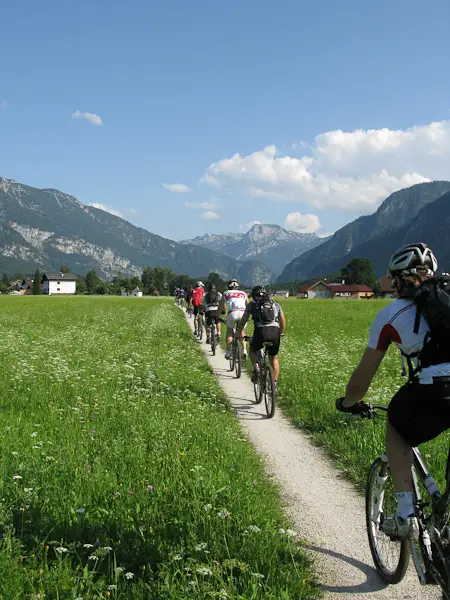
Having ridden the new Top Fuel on a 2.5 hour loop of the Austrian mountains, I can confirm that it works. The bike now feels a lot more ‘snappy’
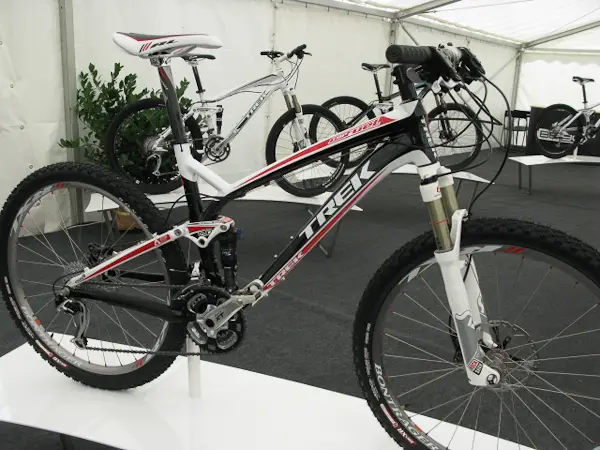
‘But how can you make great bikes if you live somewhere flat and dull like Wisconsin?’ is a question that has been put to the designers, to which they can counter that Trek has 10 miles of private singletrack in 250 acres of land across the road from the factory. They even have a full time trail builder. There’s a new design centre, new US (and Asian) testing labs and a California based suspension design centre (that’ll be where Jose Gonzalez (ex-motocross and Manitou) works then…
The new 2010 Fuel EX using the DRCV – Dual Rate Control Valve.
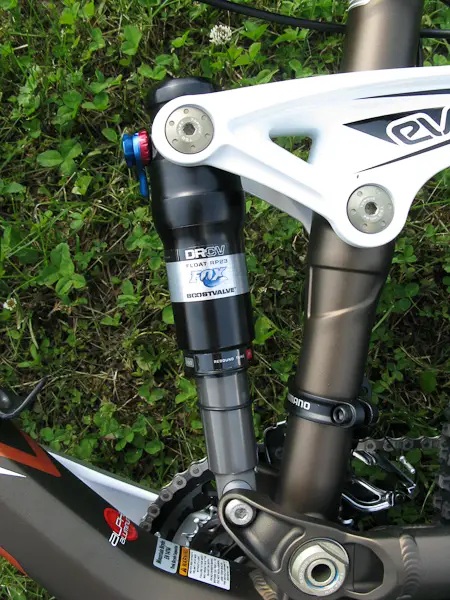
This a new shock that’s been co-developed by Trek and Fox Racing Shox. Put simply it’s two shocks in one. There’s a position-sensitive valve that opens at 50% of shock travel. There are two air chambers. The first one gives a ride similar to a regular RP23, once it gets to 50% of travel, the shock piston contacts a rod, opening up the second chamber and turning the shock into a big air-can. Bigger air volumes are great for longer travel and that ‘bottomless’ feeling but can sit down into their travel on smaller bumps. The idea of the DRCV shock is to give you a nippier feel for half the travel, and more of a coil-spring feel on bigger hits. It’s like the idea of the Two-Stage bikes – only they have to use two shocks to get that same feeling.
The Fuel EX-Carbon gains the ABP Race – lower profile and one-sided operation. It now features full carbon seatstays (complete with carbon fibre brake mounts. This saves 100g. Total weight loss is 200g over 2009.
2054g frame and shock weight. Total weight for the 9.9 on BR Guy Kesteven’s scales is 24.2lbs.
Fuel EX Aluminium
Comes with the DCRV shock on EX 8 and 9 models, It also now comes with the E2 headtube allowing for a tapered steerers, this goes down to the EX 6. There’s also a BB 85 system, which again allows for press-fit bearings and a reduced Q-factor (the distance between your ankles) – it’ll work with Truvative, Shimano and FSA. The ABP dropout system will go right down the range to the £1249 EX 5.
2455g weight for frame and DRCV shock. 75g lighter than 2009.
OCLV Elite
Now disc specific, 1050g frame weight.
Featuring the no-cut seat mast, BB90 system.
Comments (4)
Leave Reply
Post Comment

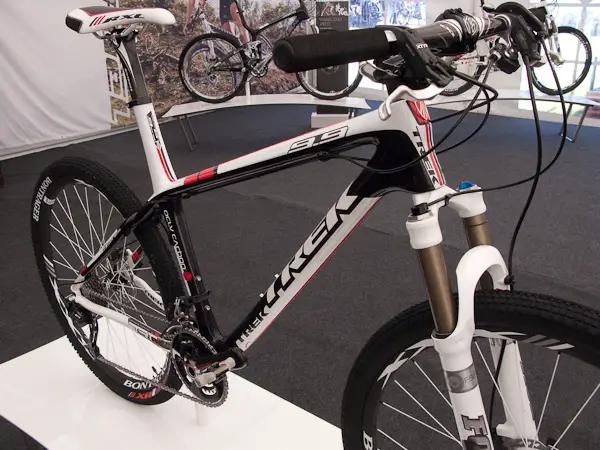
Looks like Trek are doing it again…. They look GREAT!
lets just hope Trek are nice to me and i don’t have to wait too much longer for my new TopFuel.
I will be there on tuesday with the Trek UK dealers,looking forward to the awesome new bikes, Dewi Robinson Rocky Mountain Cycles,South Wales
http://www.ride-bikes.com
01443 231400
i`de put a deposit on a 09 top fuel 9, they then put the price up £500 from the original £2100 so it took it out of my price bracket. i`ve now got a giant anthem X1, the bike`s great, but the trek does look good though… i think the trek is over priced for an alley frame.